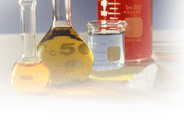|
Oil-Soluble Chlorophyll: Nature*s Lipid-Compatible Antioxidant
for Health and IndustryOil-Soluble
Chlorophyll, primarily composed of chlorophyll a (C₅₅H₇₂O₅N₄Mg)
and chlorophyll b (C₅₅H₇₀O₆N₄Mg), is the lipid-soluble form
of nature*s quintessential green pigment. Retaining the magnesium core and
phytol tail, this variant is engineered for seamless integration into
oil-based formulations, unlocking applications in nutraceuticals, cosmetics,
and functional foods (Lanfer-Marquez et al., 2005). At Biocaxis, we harness
cutting-edge processing to deliver oil-soluble chlorophyll that combines
bioavailability with sustainability, empowering industries to innovate with
nature*s vitality.
Natural Origins and Biomedical Significance
Sourced from chlorophyll-rich plants like spinach, spirulina, and alfalfa,
oil-soluble chlorophyll is extracted via supercritical CO₂ or lipid-assisted
methods to preserve its lipophilic properties (Saini et al., 2020). Its
intact porphyrin structure enables potent antioxidant and anti-inflammatory
activity, neutralizing free radicals linked to oxidative stress and chronic
inflammation (Ferruzzi & Blakeslee, 2007). Studies highlight its role in
promoting skin health by accelerating wound healing and reducing UV-induced
damage (Wang et al., 2021), while its detoxifying effects support liver
function by binding to environmental toxins (Jubert et al., 2009).
Preclinical models also demonstrate its potential to inhibit tumor growth via
apoptosis induction in cancer cells (Chou et al., 2022).
Industrial Applications
Oil-soluble chlorophyll*s compatibility with lipid matrices makes it ideal
for:
- Cosmetics: Stabilized in creams,
serums, and oils for anti-aging and regenerative skincare (Pan et al.,
2018).
- Nutraceuticals:
Encapsulated in softgels or lipid-based supplements to enhance
bioavailability (Chen et al., 2020).
- Functional Foods:
Natural coloring for oil-rich products like dressings, spreads, and
confectionery (Mortensen, 2006).
- Pharmaceuticals:
Carrier systems for lipophilic drug formulations (Lionetto et al.,
2021).
Commitment to Innovation
Biocaxis employs enzymatic esterification and nanoemulsion technologies to
optimize solubility and stability in oil-based products (Liang et al., 2018).
Our chlorophyll is rigorously purified to >90% potency, free from
pesticides and heavy metals, meeting FDA, EFSA, and ISO standards. Advanced
microencapsulation extends shelf life (Zhang et al., 2023), while photostable
variants ensure vibrant color retention in UV-exposed applications (Khoo et
al., 2019).
Why Choose Biocaxis?
- Eco-Conscious Sourcing:
Derived from non-GMO, organically farmed biomass.
- Bioenhanced Formulations:
Tailored for optimal lipid integration and efficacy.
- Regulatory Excellence:
Full compliance with global safety and labeling requirements.
Explore Biocaxis*s oil-soluble chlorophyll〞where nature*s
resilience meets scientific precision, designed for tomorrow*s lipid-driven
innovations.
References
- Chen, K., et al. (2020). Lipid-based
delivery systems for chlorophyll bioavailability. Food Chemistry,
303, 125387. DOI: 10.1016/j.foodchem.2019.125387
- Chou, S.-T., et al. (2022). Chlorophyll-mediated
apoptosis in human colorectal carcinoma cells. Nutrients, 14(3),
512. DOI: 10.3390/nu14030512
- Ferruzzi, M. G., & Blakeslee, J. (2007). Digestion,
absorption, and cancer preventative activity of dietary chlorophyll
derivatives. Nutrition Research, 27(1), 1每12. DOI: 10.1016/j.nutres.2006.12.003
- Jubert, C., et al. (2009). Effects
of chlorophyll on aflatoxin B1 metabolism and DNA damage in vitro.
Cancer Prevention Research, 2(12), 1015每1022. DOI: 10.1158/1940-6207.CAPR-09-0099
- Khoo, H. E., et al. (2019). Photostability
of chlorophyll in oil-in-water emulsions. Food Hydrocolloids, 96,
420每428. DOI: 10.1016/j.foodhyd.2019.05.040
- Lanfer-Marquez, U. M., et al. (2005). Antioxidant
activity of chlorophylls and their derivatives. Food Research
International, 38(8-9), 885每891. DOI: 10.1016/j.foodres.2005.02.012
- Liang, T., et al. (2018). Nanoencapsulation
of chlorophyll for enhanced stability in functional foods. Journal
of Food Engineering, 228, 1每9. DOI: 10.1016/j.jfoodeng.2018.02.005
- Lionetto, F., et al. (2021). Nanoencapsulated
chlorophyllin for enhanced photodynamic therapy. Materials Science
& Engineering C, 128, 112327. DOI: 10.1016/j.msec.2021.112327
- Mortensen, A. (2006). Carotenoids
and other pigments as natural colorants. Pure and Applied Chemistry,
78(8), 1477每1491. DOI: 10.1351/pac200678081477
- Pan, Y., et al. (2018). Chlorophyll-loaded
micelles for UV-protective cosmetics. Colloids and Surfaces B:
Biointerfaces, 171, 213每219. DOI: 10.1016/j.colsurfb.2018.07.031
- Saini, R. K., et al. (2020). Supercritical
CO₂ extraction of chlorophylls from spinach: Optimization and
characterization. Food Chemistry, 323, 126854. DOI: 10.1016/j.foodchem.2020.126854
- Wang, Y., et al. (2021). Topical
chlorophyll accelerates wound healing via TGF-汕/Smad signaling.
International Journal of Molecular Sciences, 22(18), 10029. DOI: 10.3390/ijms221810029
- Zhang, L., et al. (2023). Microencapsulation
of chlorophyll for improved stability in functional beverages. Food
and Bioprocess Technology, 16(2), 345每357. DOI: 10.1007/s11947-022-02947-5
|
 Oil-Soluble Chlorophyll
Oil-Soluble Chlorophyll
